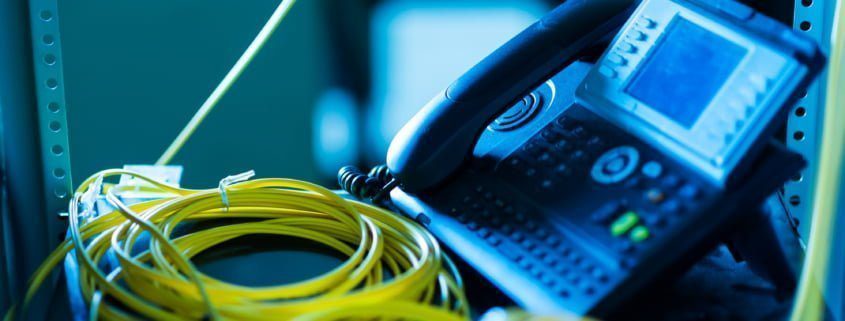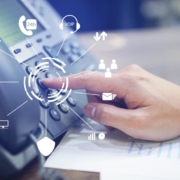SIP Trunk and DID, what is the difference?
SIP trunk and DID are not competing with each other. Both are parts of a completed phone system and work together.
But it’s important to know how they integrate, as you’ll need to obtain and configure both of them to set up an operational IP phone system.
GDMS is offering VoIP services to enterprises in Myanmar and Laos. If you are interested to connect your enterprise PBX to the public network, we have a solution for you. If you do not have a PBX or it is near the end of support, we can easily replace your physical PBX with a cloud-based PBX that will achieve the same purpose and enrich your communication with video calls, IVR, and conferences.
What is DID?
A DID (Direct Inward Dialing) number is a virtual phone number that can connect to one or multiple phones without the need to dial an extension or operator assistance. DIDs enable your staff to have a direct long number that is directly connected to their phone.
If you run an office with hundreds of phones, you could possibly assign a DID number to each phone, rather than having a single phone number and requiring external callers to dial an extension to reach a specific phone in the office. It creates a seamless experience.
How does DID – Direct Inward Dialing really Work?
A DID number connects over the internet, using a SIP trunk. The call path using a DID looks like this:
Caller > SIP trunk > Internet > PBX > Receiving PBX phone
If you only have one phone, you do not need to have a PBX in place and calls would go straight from the internet right to your IP phone.
- SIP Trunk: A SIP (Session Initiation Protocol) trunk is the pipe that attaches your phone to the internet. A SIP trunk is a solid alternative to traditional PRI (Primary Rate Interface) phone line trunks. SIP trunking is much easier to setup, and scale better than a PRI trunk, because you do not have any protocol limit except the internet bandwidth provided by your ISP.
- VoIP (Voice Over Internet Protocol): VoIP is a protocol for transmitting phone calls over the internet. If you use a SIP trunk connection, you are using VoIP protocol. VoIP phone numbers are virtual phone numbers. But VoIP phone numbers look the same as traditional phone numbers. You can create your own dialplan with short number for communicating inside your enterprise network. Or you can map VoIP number to DID to connect calls from and to the traditional public network
- VoIP Device: A VoIP device is simply a soft or hard phone or any other device that is capable of making calls using VoIP protocol. Smartphones, computers, and VoIP phones are all VoIP capable devices.
- PBX (Private Branch Exchange): A PBX system is a local phone system that connects multiple phones to your SIP trunk. A medium or large office uses a PBX system to connect all of these phones to the SIP trunk and route calls to the right phone based on the phone extension.
- PSTN (Public Switched Telephone Network): The PSTN is the traditional phone network that has existed for decades. It is composed of fixed and mobile operators that are interconnected with each other. Each operator has its own number allocation which is how the calls are routed between telecom operators.
- VoIP Gateway: A VoIP gateway connects VoIP phone numbers and devices to the PSTN and vice versa. A VoIP gateway translate digital signals, so that they can be transmitted over the PSTN. Conversely, a VoIP gateway will translate data for transmission over the internet. In short, a VoIP gateway is the bridge between the internet and the PSTN.
Popular Use Cases
The principal advantage of using DID numbers over traditional phone numbers is that it’s much faster and more cost-effective to add phone numbers. Expanding traditional phone infrastructure requires running new physical wires. On the other hand, you can scale up many DID numbers on a single internet connection, as long as you have the bandwidth to support the concurrent calls from and to all your phone numbers.
Here are a few popular uses cases for DID numbers, to add clarity:
- PBX Systems: PBX systems caters to multiple phones and require their own dialplan. Without DID numbers, outside callers need to call a central business phone number, then dial the internal extension to route the call to the person they want to reach. Using DIDs allows you to assign a unique phone number to each phone. That way callers can simply dial a phone number to reach an employee in the office.
- Communication Apps: Messenger, communication apps, and VoIP softphones can use DID numbers to produce a more natural calling experience. That way, users can use an app to make a standard phone call.
SIP Trunk vs DID Providers
GDMS is a SIP trunking and DID provider covering Myanmar and Laos. Customers can leverage our in-country VoIP gateway to connect their enterprise PBX to the PSTN network. If the customer does not own a PBX, GDMS offers cloud-based IPBX solutions that are both cost-effective and extremely scalable.












